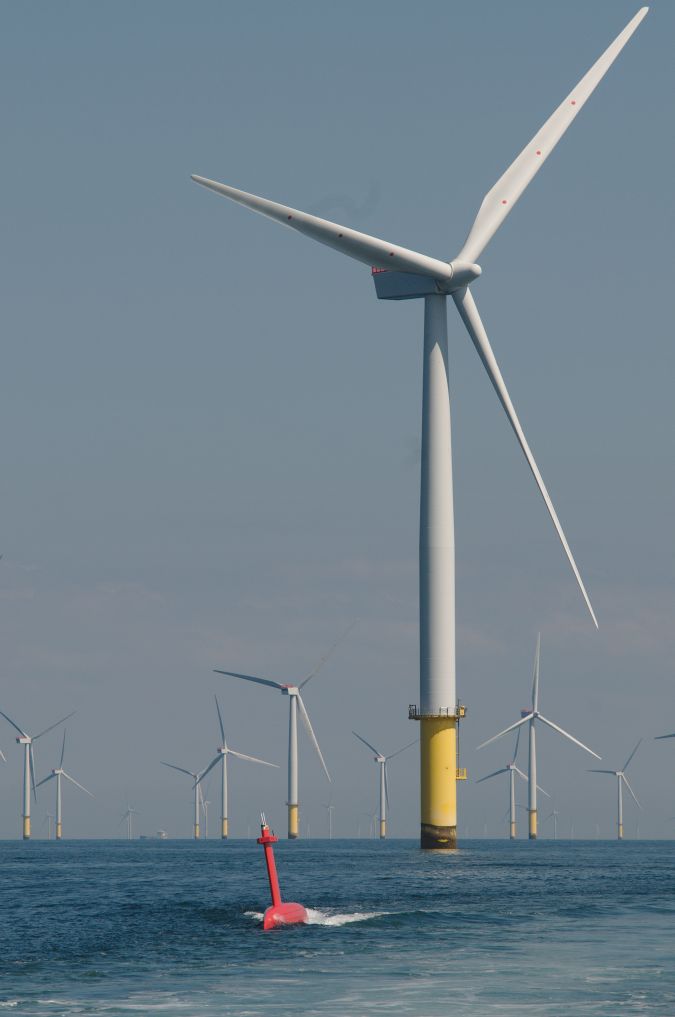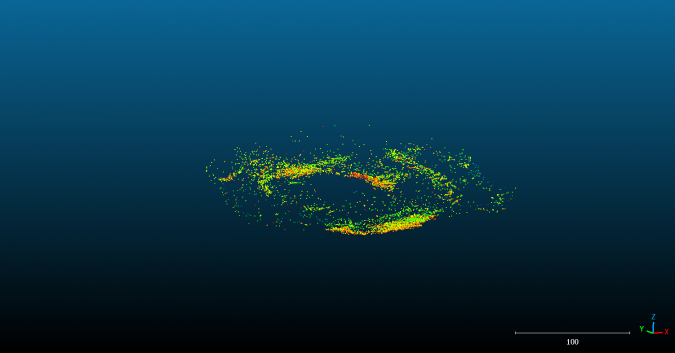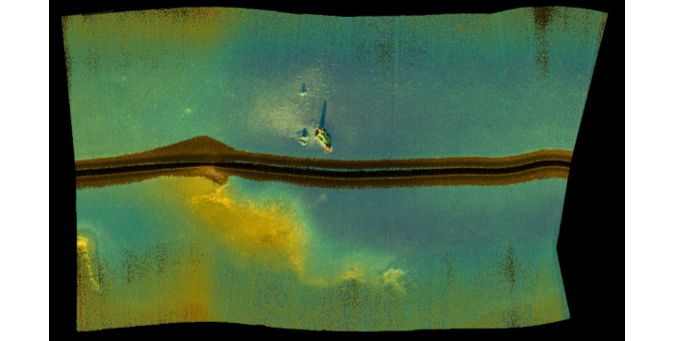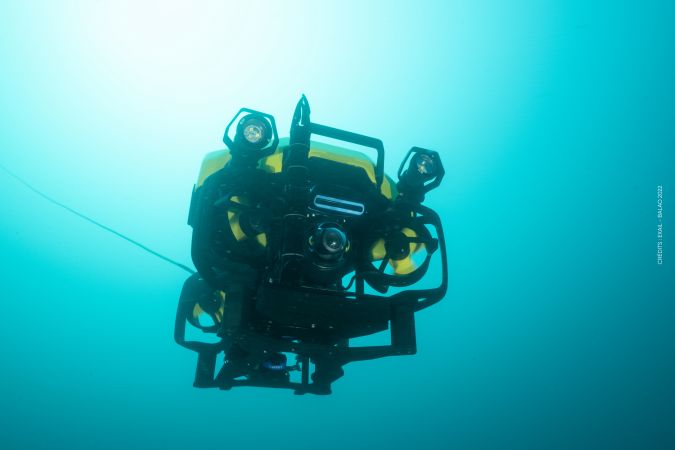With hundreds of new offshore wind projects in development around the world and annual growth of almost 30%, offshore wind is a rapidly maturing renewable energy technology that offers great potential. Bolstered by national policies and decreasing technological costs, the global offshore wind market is set to expand strongly in the coming decades, whether in Europe, Asia or the US, and is forecast to “increase 15-fold to 2040, becoming a $1 trillion industry over the next two decades.
Leveraging decades of offshore energy expertise, Exail is a trusted partner in this transition towards more sustainable offshore energy. Already used on offshore wind farm projects around the world, the company’s innovative technologies (inertial navigation systems, subsea positioning and imagery solutions, as well as uncrewed autonomous platforms) offer proven performance and reliability in the challenging environments of offshore wind energy posed by shallow waters and high winds. Requiring less equipment to be deployed at sea and offering disruptive yet proven uncrewed solutions and advanced subsea sensors, Exail helps operators to improve operational efficiency by reducing costs and the time spent at sea while improving safety and cutting carbon emissions. From environmental studies, UXO surveys and site investigation to construction, operations and predictive maintenance, Exail is a trusted technology provider at every stage of a wind farm’s development and operating life.
Unique versatile uncrewed platforms for more flexible operations at sea
As a major provider of advanced marine and autonomy technologies, Exail is playing a central role in advancing operational efficiency in the offshore industry. With its DriX uncrewed surface vehicle (USV), FlipiX remotely operated towed vehicle (ROTV) and R7 remotely operated vehicle (ROV), the company provides comprehensive autonomous survey capabilities that offer improved performance and greater operational efficiency for various applications, including environmental, geophysical, UXO and as-laid surveys, inspection, maintenance and repair (IMR) and biomass assessment.
Offering outstanding sea-keeping capabilities (up to sea state 5) thanks to its unique design, the DriX USV is perfectly suited to challenging offshore wind farm environments. Able to host a wide range of payloads for multi-mission capabilities (MBES, SBP, USBL, INS, FLS, etc.), its high stability ensures the collection of high-quality and accurate data, even in high sea states (incidentally, recent operations using DriX showed that data cleaning could be reduced by 90%). Combined with the FlipiX ROTV – a unique conveyance platform for sidescan sonars (SSS) and magnetometers – this global uncrewed solution enhances the autonomous survey scope, making it possible to conduct bathymetric, geophysics and UXO surveys in a single run and therefore drastically reducing survey time and removing the need for costly support vessels.

The new R7, a compact observation-class ROV, further offers advanced subsea exploration and inspection capabilities down to 300 metres. Combining the portability and ease of deployment of mini-ROVs with the performance, speed and payload carrying-capacity of professional observation-class ROVs, the R7 can be deployed to inspect the integrity of subsea assets and UWILD operations. Incorporating the latest developments in digital technology, the R7 provides operators with very high-quality images, even in low visibility conditions.
Deploying Exail autonomous platforms on offshore wind farm sites also means conducting operations with a reduced impact on the environment. Consuming only 50 litres of fuel per day, the DriX USV can replace ships of about 60 metres with a daily fuel consumption of some 5,000 litres. The ecological footprint of operations at sea can therefore be reduced by a factor of 100 compared to traditional vessels.
Finally, as pioneers in uncrewed maritime solutions, Exail helps to ensure the safety of personnel by reducing their exposure at sea. The company’s uncrewed solutions can be supervised from remote control centres (located either onshore or on a mother vessel) using reliable over-the-horizon capabilities thanks to advanced communication and obstacle avoidance systems.

Increased efficiency can further be reached when combining Exail’s uncrewed solutions with its trusted subsea positioning and imaging solutions, such as the Gaps series of USBL subsea positioning systems, the complete range of inertial navigation systems (INS), the Sams synthetic aperture mapping sonars, the Echoes sub-bottom profilers, and SeapiX 3D multibeam echosounders. Compatible with third-party assets for better interoperability, all Exail sensors can be deployed from a wide range of platforms, ranging from traditional vessels to uncrewed surface and subsea vehicles, and are easy to integrate into existing pools of equipment and operational fields with no compromise on performance or reliability, ultimately bringing increased flexibility and efficiency.
Compact and lightweight, the Gaps series is already being used in the renewable energy industry to conduct various operations such as UXO pre-survey and structure deployments. Easy to deploy, the Gaps USBL systems embed their own motion sensors and do not require any on-the-field calibration. Offering unmatched accuracy in very shallow waters and horizontal tracking, they are especially suited to the environments encountered on wind farm development sites. Coupled to Exail’s subsea inertial navigation systems (INS/AHRS), which already equip over 80% of the subsea vehicles used in the energy and geoscience industries, the Gaps series powers the highly accurate positioning and tracking of subsea assets such as AUVs, ROVs or towfish. It is also the perfect technology for cable laying and touch-down monitoring operations that require a highly robust horizontal tracking capability.
Exail’s unique subsea imagery solutions are also perfectly adapted to wind farm applications. Relying on 20 years of field-proven technologies, the wide range of Exail subsea imagery solutions extends from water column analysis to seabed mapping and monitoring and meets all renewable energy installation and surveillance needs.
The Sams synthetic aperture mapping sonars provide unprecedented performance compared to conventional sidescan sonars, even in the very shallow waters encountered in wind farm environments. They deliver, in real time, both high-resolution images of the seabed and interferometric bathymetry required for site and route surveys. The Echoes Series of sub-bottom profilers highlight the sedimentary deposits architecture and gas release, as well as highly reflective buried objects, such as cables, pipelines and boulders. The Exail Sams and Echoes series are therefore particularly useful for field extension phases, cable route surveillance and inspection and maintenance operations.

Finally, the company’s SeapiX 3D multibeam echosounder enables the highly accurate classification of marine ecosystems and the quantification of biomass, fish and shoal dynamics. This real-time biomass monitoring in a static position makes it possible to study natural resource evolution throughout the offshore wind project life cycle.
Overall, Exail’s comprehensive set of technologies, from sensors to autonomous conveyance platforms, offer unmatched performance, reliability and versatility, allowing operators to conduct accurate but efficient operations in a reduced time frame and with increased safety. Smaller and smarter technologies that do not require large vessels and big crews to be deployed reduce the hours spent at sea and will play a central role in the offshore energy industry’s transition towards a more sustainable future.


